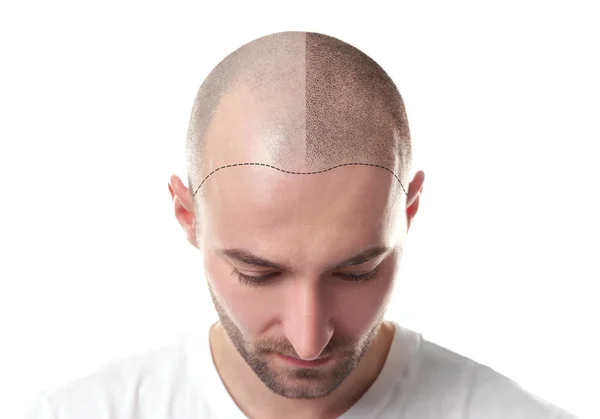Working Time
- – Monday-Friday 09:00 – 16:00
(After 16:00 Only with appointment)
– Saturday, Sunday With appointment
Contact Info
-
-
Tel: 1-514-243-4019
-
Ask the Experts
Scalp Micropigmentation (SMP)

Scalp Micropigmentation (SMP) is a non-surgical cosmetic procedure designed to treat hair loss by applying tiny, pigment-based tattoos to the scalp. The procedure mimics the appearance of natural hair follicles, creating the illusion of a fuller, thicker head of hair. SMP is especially popular among individuals with thinning hair, male pattern baldness, or those who have experienced hair loss due to conditions like alopecia or after chemotherapy. It can be used to create the appearance of a short, shaved hairstyle or to camouflage thinning areas, offering a long-lasting solution for hair restoration.
Key Features of Scalp Micropigmentation:
- Hair Follicle Simulation:
- The procedure uses a specialized needle to deposit pigment into the dermal layer of the scalp. This creates small, precise dots of color that resemble hair follicles, effectively giving the appearance of a fuller, denser hairline.
- Customization:
- SMP is highly customizable to suit individual needs. It can be used to create different effects, such as a shaved head look (known as the “buzz cut” effect), filling in receding hairlines, or concealing thinning areas, especially on the crown or top of the head.
- Permanent Results:
- SMP is a semi-permanent solution, meaning it will last for several years (usually 4-6 years, depending on factors like skin type, lifestyle, and the quality of the procedure). Over time, the pigment may fade slightly, but touch-up sessions can help maintain the results.
Procedure Process:
- Consultation:
- The process begins with an in-depth consultation where the technician assesses the client’s scalp condition, discusses goals, and determines the ideal hairline shape and pigment color to match the client’s natural hair color and skin tone.
- Design and Mapping:
- During the session, the technician maps out the hairline and the areas to be treated, taking care to ensure the final result will be symmetric and natural-looking. Clients can provide input on their desired look, whether it’s a soft, natural hairline or a more defined, sharp look.
- Pigment Application:
- Using a specialized machine and a fine needle, the technician deposits small amounts of pigment into the scalp, mimicking the appearance of hair follicles. The procedure is usually done in multiple sessions, with each session lasting around 2-4 hours depending on the extent of the treatment area.
- Healing:
- After the procedure, the treated area may be red or slightly inflamed, but the healing process is relatively quick. Most clients experience little to no downtime. The pigment settles in over the next 7-10 days, and the final result becomes more apparent after the area heals.
- Touch-Up Sessions:
- A follow-up session is often scheduled 4-6 weeks after the initial treatment to refine the design and ensure the pigment has healed properly. Subsequent touch-ups can be scheduled to maintain the results over time.
Benefits of Scalp Micropigmentation:
- Non-Surgical:
- SMP is a non-invasive, non-surgical procedure, making it a safer alternative to hair transplant surgery. There is no need for incisions, stitches, or recovery time, and the risk of complications is minimal.
- Instant Results:
- Unlike hair transplant surgeries, which can take months to show results, SMP provides instant results. The client can walk away with the appearance of a fuller, thicker head of hair immediately after the treatment.
- Natural-Looking:
- When done by a skilled technician, SMP results in a highly natural look, especially when the pigment color is matched precisely to the client’s natural hair color and the placement of the dots simulates the pattern of natural hair follicles.
- Low Maintenance:
- Once healed, the results of SMP require very little maintenance. There is no need for special shampoos or treatments, and clients don’t need to worry about their hairline changing as it does with hair loss over time.
- Suitable for Different Types of Hair Loss:
- SMP can be used to treat a wide variety of hair loss conditions, including male and female pattern baldness, thinning hair, alopecia, and even scars from previous hair transplants or injuries.
- Boosts Confidence:
- By providing a fuller, thicker hairline, SMP can significantly boost the client’s self-esteem, particularly for individuals who have struggled with the effects of hair loss.
Ideal Candidates for Scalp Micropigmentation:
- Male and Female Pattern Baldness: Individuals experiencing receding hairlines, thinning crowns, or full-on baldness.
- People with Alopecia: Those suffering from alopecia areata or other forms of hair loss can use SMP to camouflage bald patches and create a more even appearance.
- Chemotherapy Survivors: People who have lost their hair due to chemotherapy can use SMP to restore a natural look while waiting for their hair to grow back.
- Hair Transplant Scars: SMP is often used to conceal scars from previous hair transplant surgeries, making the scars less noticeable by blending them into the surrounding scalp.
- Those Who Prefer a Low Maintenance Look: Individuals who prefer a low-maintenance, buzz-cut appearance and don’t want the hassle of daily grooming or styling.
Risks and Considerations:
- Temporary Side Effects:
- Some individuals may experience redness, swelling, or slight discomfort in the treated area immediately after the procedure. These side effects typically subside within a few hours to a day.
- Fading Over Time:
- Although SMP provides long-lasting results, the pigment can fade over time due to sun exposure, oily skin, or lifestyle factors. Regular touch-ups can help maintain the look.
- Not a Hair Regrowth Solution:
- It’s important to note that SMP does not actually regrow hair. It only mimics the appearance of hair follicles. Those looking for actual hair regrowth will need to explore other treatments like hair transplants or medications.
- Allergic Reactions:
- Though rare, some people may be allergic to the pigments used in SMP. A patch test can be done before the procedure to check for any allergic reactions.
- Choice of Technician:
- The results of SMP depend heavily on the skill and experience of the technician. It’s essential to choose a certified, experienced professional to ensure that the results are natural and well-executed.
Aftercare:
- Avoid Sun Exposure: Protect the treated area from direct sunlight for a few weeks after the procedure, as UV rays can fade the pigment prematurely.
- Gentle Cleaning: Avoid scrubbing the treated scalp. Clean the area gently with a mild, non-abrasive cleanser.
- Avoid Sweating: Refrain from heavy sweating (e.g., intense workouts or saunas) for at least 4-5 days to avoid irritating the scalp.
- Moisturize: Use a gentle, non-oily moisturizer if recommended by the technician to keep the treated area hydrated.
- Follow-Up Appointments: Attend touch-up sessions as recommended to maintain the best results.
